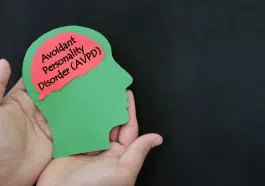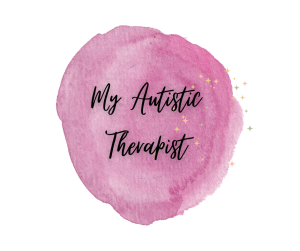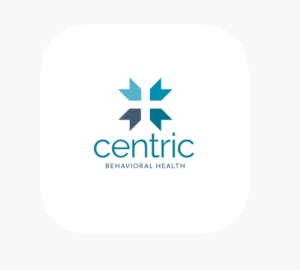EMDR (Eye Movement Desensitization and Reprocessing) is a type of therapy that allows people to heal from the symptoms associated with trauma. When a person’s system is imbalanced due to the impact of a disturbing event, the emotional wound can create immense suffering.
A qualified therapist will perform the detailed protocols and procedures from EMDR therapy training sessions. That way, these clinicians can help clients initiate their natural healing capabilities. Once a clinician helps a client remove the block, then the healing process can take effect.
Eye movements (or other bilateral stimulation) are used at one point during the session. After the therapist has decided which memory to target, they will ask their patient to hold various parts of that event or thought in their mind. The client will then use their eyes to track the therapist’s hand while it moves back and forth over their field of vision.
Because it is connected with the biological mechanisms involved in Rapid Eye Movement (REM) sleep, these internal associations will surface. The client can start processing the memory and uncomfortable feelings. When EMDR therapy is successful, it will transform the association of painful events.
What Does EMDR Treatment Entail?
EMDR therapy combines various elements to enhance the effects of treatment effects. It includes three time periods: the past, present, and future. For the past, there is a focus on disturbing memories and related events. Attention is also brought to current distressing circumstances and to implement skills that will create a positive outcome for the future.
EMDR therapy uses an eight-phase treatment approach:
Phase 1
The first phase is a session that takes a patient’s history. The clinician will determine if a client is ready and will come up with a treatment plan.
Together, the client and therapist will plan for targets for EMDR processing, including distressing memories or current situations that create emotional distress. There will be an emphasis placed on honing specific skills and behaviors that the client will find helpful in future scenarios.
Initial EMDR processing may very well be tied to childhood events. As a result, the patient will gain insight into their circumstances, and they can begin to resolve the emotional distress and shift their behaviors.
The therapist will also determine the length of treatment. It all depends on how many traumas occurred and the age when PTSD first took place. People with single event adult onset trauma can have successful treatment outcomes in under 5 hours. Victims of multiple traumas will require longer treatment times.
Phase 2
During Phase 2, the clinician will make sure that the client has various ways of coping with emotional distress.
The therapist will likely teach the client stress reduction techniques that they can use between their sessions. One of the goals of this type of therapy is to produce rapid and effective changes, ensuring that the client maintains equilibrium during and between meetings.
Phases 3 to 6
In phases three to six, the client will identify three things:
1. The vivid visual image associated with the memory
2. A negative core belief about themselves
3. Related emotions and sensations they feel in the body.
The client will also identify a positive belief about themselves.
The therapist will work with the patient to rate the positive belief and the intensity of the negative emotions. Following this step, the client will focus on the image, negative thought, and body sensations while participating in EMDR processing which uses sets of bilateral stimulation.
These sets can include tapping, eye movements, or tones. The duration and type of sets are unique to each client.
The patient will then be instructed to notice what happens during this process. After each set of stimulation, the therapist will tell their client to let their mind go blank and see what feelings, thoughts, images, or memories come to the surface. Depending on the patient’s report, the clinician will then decide on the next focus of attention.
When the client reports no distress related to the specific memory, they will then think of the positive belief they identified at the start of the session. The patient may then adjust the positive thought as needed and then focus on it during the next set of distressing memories.
Phase 7
Phase seven involves closure. The clinician will ask the client to keep a log during the week. This log will account for any related ideas that come up and will help remind the client of self-soothing activities that they successfully performed in phase two.
Phase 8
Phase eight analyzes the progress made so far. The EMDR therapy processes all related past events, current distressing incidents, and future events that will need different responses to trauma.
What Have Been Some of the Outcomes When People Do Emdr Therapy?
Much research has been conducted on EMDR therapy, and it is now officially recognized as an effective form of trauma therapy. It has been approved by organizations like the American Psychiatric Association, the World Health Organization, and the Department of Defense.
With worldwide recognition as an effective treatment for trauma, it’s easy to see how EMDR therapy can effectively treat daily stressors and memories that contribute to people having low self-esteem, feelings of powerlessness, and other anxieties that bring them to treatment.
Currently, over 100,000 clinicians worldwide are using EMDR. Millions of people from all over have been successfully treated with this type of therapy over the past 25 years.
There have been more than 30 positive controlled outcome studies about EMDR therapy. The results have shown that 84% to 90% of single-trauma victims no longer have PTSD after only doing three 90-minute sessions. Another study found that 100% of the single-trauma victims and 77% of multiple trauma victims no longer met the criteria for PTSD after doing only six 50-minute sessions. Lastly, another study determined that 77% of combat veterans were free of symptoms of PTSD in 12 sessions.
In Summary
In essence, clients will usually leave EMDR therapy feeling more empowered about the experiences that once traumatized them. A common outcome of the EMDR process is that the clients’ thoughts, feelings, and behaviors are indicators of their emotional health. This therapy can be highly beneficial since they don’t have to speak about their trauma in great detail or do other work required of different treatments.
Related: 9 Ways to Improve Your Mental Health















